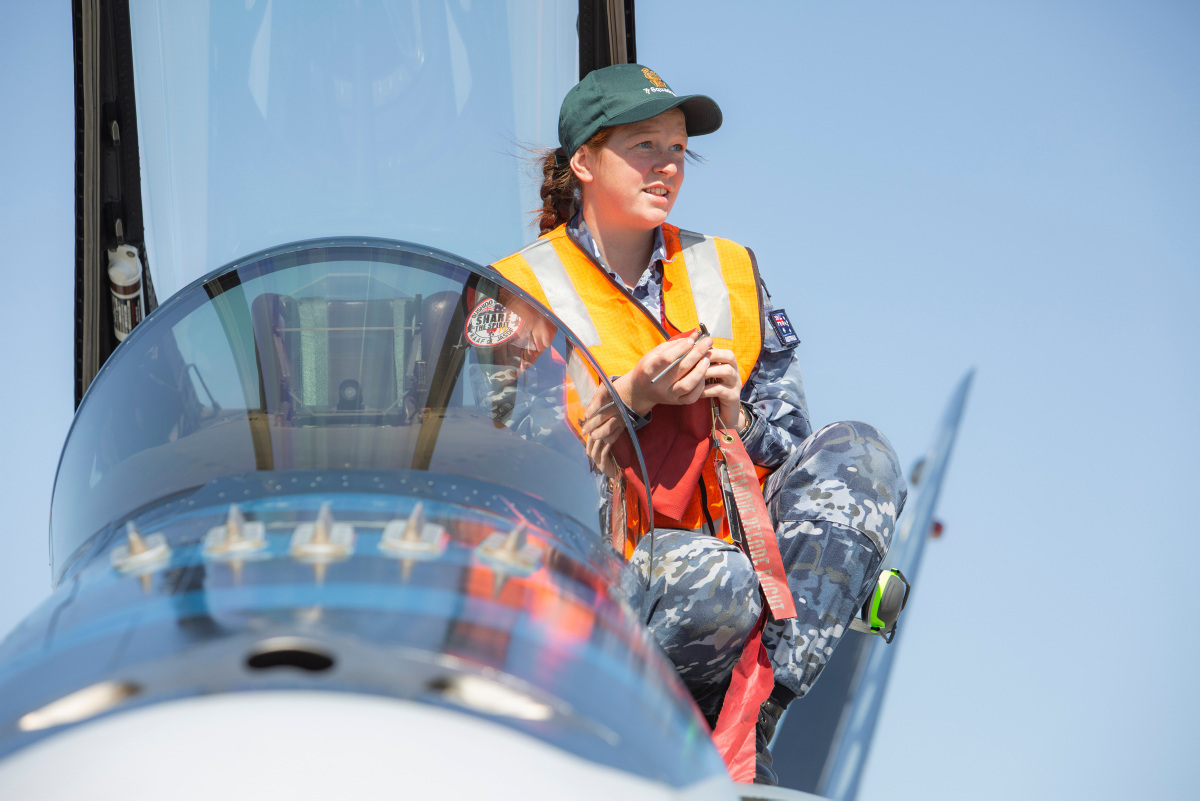
The relationship between women’s participation in the Australian Defence Force and the concept of women, peace and security in the context of ADF operations isn’t yet clearly articulated in capability terms. This discredits it in the eyes of those who object to WPS as an agenda and risks undermining the successful implementation of WPS as a security approach. Articulating the connection would be assisted by further research in two areas: empirically assessing the capability and skills needed to implement WPS, and striking a balance between thematic expertise and country-specific knowledge of gender relations.
The first issue is vexed. While we often hear female participation described as an essential input to achieving WPS effects, three different arguments seem to be put forward in support of it. The first is that female participation offers a new deployable capability because servicewomen can engage with local women in the deployed environment, because they are women and notwithstanding differences in language, culture and probably socioeconomic background. This assumption of gendered capability also seems part of the UN’s WPS practice, especially in its targets for female participation in peacekeeping, and the generic assertion that the inclusion of female peacekeepers will increase the willingness of local women to report violence.
Neither part of this argument appears to be supported yet by a body of relevant empirical research. Moreover, it diverts research attention from the individual skills and training needed to meet WPS operational outcomes in both female and male personnel—which could include cross-cultural awareness, languages other than English, intelligence collection, logistics, and policing and infantry patrol skills—as well as practical considerations such as the availability of both male and female interpreters and community liaisons.
Alternatively, it’s suggested that increasing women’s participation in the military offers an expanded capability, because diversity of representation necessarily brings diversity of thought to achieve operational goals and plans. This raises a significant difficulty in managing expectations because, statistically, most members of any gender will be average performers.
A third variant is that female participation offers increased scope to produce the same capability because it’s no longer possible to meet ADF capability requirements through traditional recruitment pools. That line of thinking puts the spotlight on physical standards and training and attracts emotive debate, which has little connection to the purposes of the WPS agenda. This approach is complicated by the overlay of arguments about gender parity and inclusion, and the need for compliance with the federal Sex Discrimination Act.
The challenge is to define a central and consistent narrative that answers the essential question for women’s participation to WPS ends—not participation for its own sake but participation in what and for what. UN Security Council resolution 1325 conceived of women’s contribution to peacebuilding as occurring through channels of power and influence, not just woman-to-woman engagement on ‘women’s issues’ separate from that process. Empirical research that defines military capability for gender-specific purposes and identifies its training requirements is essential in focusing the continuing implementation of WPS in the context of deployed operations.
In addition to the lack of clarity in the capability discussion, the balance between thematic gender expertise and country-specific gender knowledge is so far relatively unexplored in the military context. For peacebuilding more broadly, Séverine Autesserre found that, despite differing individual backgrounds, intervenors in international conflicts share similar daily modes of operation; and because they are similar, they often lack an in-depth ability to generate operational plans that are tailored to the specific environment, which limits operational success.
Applied in the WPS field, this would mean balancing the input from gender experts, ADF operational planners and country experts. As an example of the new dimensions such a balance might offer, an Afghan-centric critique of coalition female engagement teams in Afghanistan argued that some of the core assumptions—that teams comprising female coalition soldiers could engage and influence Afghan women, that Afghan women were influential in a way Western forces would recognise, and that Afghan women would provide useful information for counterinsurgency operations—were misplaced in the context of gender relationships in Afghan society. The analysis concluded that that was why the teams weren’t as operationally successful as originally envisaged.
Local expertise is an essential input to operational gender analysis, but it turns on a depth of country-specific institutional and cultural knowledge that isn’t likely to exist either in the ADF intelligence community if gender is mainstreamed as an operational consideration, or among specialist military gender advisers. Instead, it represents a real opportunity for partnered research at the strategic level in defence, to build standing gender analyses of societies of high strategic importance to Australia, particularly in the Indo-Pacific region.
High-level discussion within the ADF and in the wider community has established the relevance of the WPS agenda to operational capability; the challenge now is to develop the empirical research to support a skills-based capability assessment, and country-specific analyses to support effective operational implementation.

